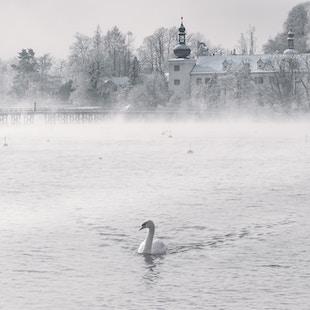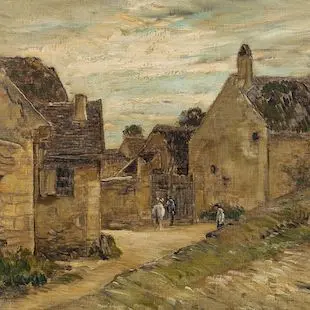Tchaikovsky: 10 Great Songs for Pianists of all Levels
We highlight some of the great composer's best works, from the famous Swan Lake ballet to his legendary Children's Album.
Last Updated 14 Sept. 2024
Pyotr Ilyich Tchaikovsky is Russia's most famous composer. He's best known for ballets, including everlasting favorites Swan Lake and The Nutcracker, which are still performed around the world today. But the composer, who died in 1893 aged 53, wrote other great music, too, including a The Seasons, a series of 12 solo piano pieces inspired by each month of the year.
Interestingly, Tchaikovsky's path to musical immortality differs from his peers, who were often identified as child prodigies and quickly put on the path to stardom. As a child, Tchaikovsky played piano and even composed pieces of his own, but instead of heading right into music like other great composers, he studied to be a civil servant. He was strongly influenced by Mozart, whose "divine music" awoke a "holy enthusiasm" in Tchaikovsky that drove the young Russian to create music himself. Luckily for us, he returned to music in his 20s.
Similar to Mozart, Tchaikovsky's compositions paint vibrant pictures that capture the imagination and evoke powerful emotions. This makes his music particularly exciting to play on piano.
We've rounded up ten of Tchaikovsky's compositions, all of which are available to learn on piano with the flowkey app.
10. Swan Theme - Swan Lake
Unconventional beauty from a famous ballet
Swan Lake tells the story of a princess who is turned into a swan by an evil sorcerer, and a prince who swears his eternal love to her in an attempt to return the princess to humanity. It's arguably the most popular ballet of all time (with Tchaikovsky's Christmas favorite The Nutcracker giving it a run for its money).
The "Swan Theme" is the melody that represents the princess and her altered form. Filled with sorrow, longing, betrayal – as well as beauty and grace – the piece captures the ballet's mood as a whole and is particularly suited to piano. It's a classic for pianists of all levels, with a dreamy and tumbling supporting left hand and a strong melody on the right. All in all, it's a great choice for all players looking to conjure unconventional beauty.
9. Dance of the Sugar Plum Fairy
The sound of angels, fairies, and gingerbread soldiers
Tchaikovsky's ballet The Nutcracker is all about imagination, wonder, and excitement. A popular soundtrack to the holiday season for millions of people, The Nutcracker is set on Christmas Eve and almost entirely within the imagination of a child. The ballet brings to life angels, fairies, gingerbread soldiers, candy canes, and The Nutcracker Prince himself.
The ballet's original choreographer wanted the Sugar Plum Fairy's music to sound like "drops of water shooting from a fountain", and this is exactly how it should be played. This mischievous little tune offers lively accompaniment on the left hand and a strong melody on the right. The middle section also offers some interesting and rapid dexterity challenges that will keep any piano player on their toes.
8. Chanson Triste
The quintessential classical-music breakup song
Chanson Triste, or sad song in English, is part of 12 songs Tchaikovsky wrote specifically for amateur pianists. Always a musical storyteller, Tchaikovsky wrote the piece in the middle of difficulties with his wife (it's generally agreed Tchaikovsky was gay), and delivered the quintessential classical-music breakup song. With melancholy, regret, yearning, and beauty – there is always beauty with Tchaikovsky – this song tells a story almost all human beings experience at least once in their lifetimes.
This piece is deceptively simple. But the simplicity allows the player to add their own flourishes, interpretations and life experiences when sitting at the piano bench to work with this piece. Beginners may find it offers exciting challenges in hand placement, with the left hand moving up and down the keys, while advanced players should find lots of room for interpretation.
7. March No. 2 - The Nutcracker
A magical military march
Also a part of the Nutcracker suite, this scene introduces the titular Nutcracker and his gingerbread soldiers to both the audience and the young woman who has snuck out of bed to experience the magic of Christmas eve. In the soldiers' fight against a group of mice, the nutcracker is victorious with the help of the young girl who is then whisked off to The Land of Sweets, while The Nutcracker is turned into a human prince.
The song captures a child's imaginative view of a magical military march, and is best played with a touch of regal humor.
6. Italian Song
Like a boat trip on a summer's day
Once described by flowkey's own song team as "like a short boat trip on a summer's day in Italy", this short piece belongs at a summer party, or some winter's day when players would like to brighten up gray skies. One of 24 songs in Tchaikovsky's Children's Album, this piece was dedicated to Tchaikovsky's nephew and was written in a style based on German composer Robert Schumann, who Tchaikovsky greatly admired.
"Italian Song" is a great piece both for beginners and advanced players due to the challenges it offers. Beginners can work their way through the levels of difficulty offered by flowkey, while advanced players will find an excellent warmup to longer pieces, as well as a compact and bright song to delight audiences in a hurry.
5. March: Song of the Lark - The Seasons (Spring)
A buoyant melody left-hand melody
This is a highlight from Tchaikovsky's 12-part Seasons, a suite of songs originally composed for piano at the commission of a Russian music magazine editor. The Lark mentioned in the title is a kind of bird common in Russia, and the melody mirrors the sound of their birdsong.
In this piece, the opening notes and the left hand are rather heavy, like winter still hanging on, but there is some surprising levity in the melody, recalling the birds of spring waiting for the sunshine. The "spring" section of the seasons also includes April: Snowdrop and May: Starlit Nights, which you can also learn with flowkey.
4. June: Barcarolle - The Seasons (Summer)
Like gently rocking sea
"Barcarolle" in the title of this piece refers to a type of song that is based on the folk singing of Italian gondoliers. The name derives from Barcarola, the Italian word for boatman, and these songs are often typified by "rocking" melodies, the kind of rocking one does with babies and on boats, rather than the kind done with electric guitars. As such, this song is slow and thoughtful.
While Tchaikovsky didn't give names to these pieces, the magazine editor who commissioned him did. Barcarolle gives a good indication of how it should be played: like a gently rocking sea in June. Gentleness is key here, and beginners and experienced players alike can practice the contemplative piano playing with this piece. The other summer pieces, July: Song of the Reaper, and August: Harvest Song, are also available to learn with flowkey.
3. Tchaikovsky: Autumn Song - The Seasons
Tempo changes and dissonant notes
Autumn, our poor garden is all falling down,
the yellowed leaves are flying in the wind.
This was the epigraph written by A. K. Tolstoy, the second cousin of the more famous Leo Tolstoy, that accompanied "Autumn Song" when it was first published. It's an excellent representation of the piece's texture, like summer leaves turned to yellow, falling on wet October ground.
One of the most interesting parts of this song is the tempo changes. While contemplative, there's a distinct tumbling feel to the piece – reminiscent of how leaves fall – that requires careful attention to tempo. There are also a handful of dissonant notes, more akin to later experimentalists like Debussy, that make this an interesting choice for those who would like to expand their knowledge of Tchaikovsky's works.
2. December: Christmas - The Seasons (Winter)
Tchaikovsky's version of a Christmas Waltz
Another of Tchaikovsky's simpler pieces, this is almost a lullaby in the style of Brahms – with a particular Tchaikovsky twist. It includes a number of notes and harmonies that have an odd flavor, without being overbearing, and it feels as if the piece is designed to fascinate and delight children rather than put them to sleep.
This advanced piece could be described as Tchaikovsky's Christmas waltz, using lively chords and melody to capture the joy of the holiday season. January: At the Fireplace, and February: Carnival are also available to learn through flowkey.
1. Old French Song – Children's Album
Gorgeous arpeggios
This melancholy song is from Tchaikovsky's famous Children's Album. Contrary to the seasons pieces, Tchaikovsky named this one himself, based on works that Robert Schumann composed for children. While this piece starts and ends bittersweet, there is a middle section that offers a bit of hope which makes it an excellent example for those who wish to try their hand at composing.
This piece should be played slowly. It can lose its character if played too fast, so it's a great chance for pianists of all levels to practice taking their time and not rush things – slow and steady is key. There are also some nice arpeggios which players of all varieties should find interesting.
Learn more Tchaikovsky with the flowkey app
flowkey makes learning Tchaikovsky songs fun and easy. A collection of drills and in-depth tutorials created by professional musicians will help you read sheet music, learn to play with both hands, and master chords and time signatures. You will also learn to play famous songs from genres like pop, jazz, film music and classical. Get started with flowkey today to start learning.
Read next
George Frideric Handel: Five Essential Songs for Piano Players
Learn to play music from the composer's rich catalog, which includes some of the most beloved Christmas songs of all time.
20 Easy Piano Songs for Beginners
You can play beautiful music on the piano, even as a beginner. We highlight 20 great, simple pieces—all available to learn with the flowkey app.
Johannes Brahms: 7 Essential Pieces for Piano Players
Learn these pieces by the famous composer to grow as a pianist and enrich your understanding of classical music.
Middle C is Just the Beginning
Understanding middle C is one of the first steps to learning how to play piano. Here's everything you need to know to get started.











